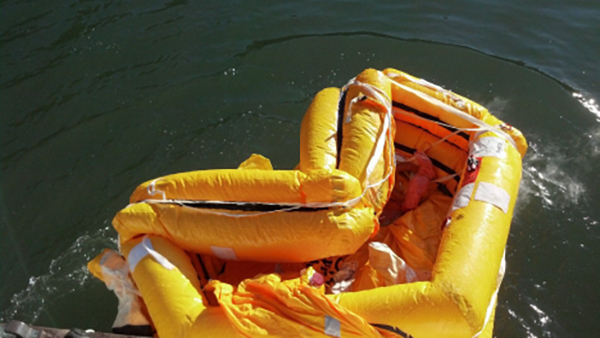
Emergencies do happen and all we can do is to prepare for them. When it comes to sailing across the sea, despite the measures put in place to prevent shipwrecks, life rafts are still kept for emergencies. Even the “unsinkable” Titanic still had emergency boats.
These pieces of equipment can literally save our lives during emergencies. You can read this to learn how to deal with marine emergencies. However, without proper maintenance, they might lead to loss of lives. With this in mind, we’ve written this piece as a guide to life raft maintenance.
Owner’s Maintenance Check
Although the main maintenance should be done by a certified professional, there are still checks you can carry out. Therefore, in this section, we’ll guide you on how to assess your raft’s condition before calling in the pros. Let’s get right into it…
If you just purchased the raft, the first thing you need to do is look for the date of inspection for your float vessel. This date can be found on the canister or valise of the raft’s exterior. For old rafts, the professional should have informed you of the next inspection during the previous one. Generally, the inspection is conducted once a year.
Some new rafts don’t need to be inspected until after they’ve been in use for three or five years. After this period, the inspection has to be done annually. You need to be sure of this grace period by consulting the manual or manufacturer.
Another thing you need to check is the expiration date of your gadgets and instrumentations. This type of maintenance can be performed without a professional. If you discover that a gadget or instrumentation has expired, then you need to replace it with a new one. When doing this, ensure you get the right replacement item.
You can also check for any kind of physical damage. Examine the external cases as well as the carrying handles. Check for tears, chafing, rips, cuts, material degradation, etc.
Examine the canister as well. This time, look for cracks, dings, sealing gasket, or packing band failure. This inspection is important as any of these damages can allow water to enter the raft when it’s afloat on the sea. If you notice any damage, you need to get the big guns (professionals) to handle the issue; do not attempt to do it yourself at this point.
You also need to check the cradle. Make sure there is no damage caused by broken welds or corrosion. Ensure that the cradles and mounts are well-secured in such a way that they won’t come apart when they hit the water.
Furthermore, inspect the webbing straps or wire that holds the canister and cradle together. Confirm that the straps or wire are properly secured. Finally, inspect the painter line by checking the firmness of the connection point.
It’s a good idea to inspect the entire raft from a little distance as it is attached to your shipping vessel for signs of problems. Assess and determine the accessibility to the life raft in case of an explosion or engine fire if it is installed close to the deck hatch’s engine. You are allowed to simulate and run drills to ensure the float can be launched when needed.

Professional Maintenance Check
There is no substitute for professional maintenance no matter how well you might have inspected and maintained your life raft. Visit universalsafety.co.uk to learn more about the different services and benefits of hiring professionals. This maintenance is required once in a year. During the annual check, the professionals will do the following:
Visual Inspection
Even if you’ve done a visual inspection as we discussed above, the professionals still have to do their due diligence. They are better trained to spot issues you might have overlooked. They’ll visually inspect the seams, closures, zippers, grab handles, lifelines, etc.
Check Inflation System
The raft’s inflation system inspection is somewhat technical. This is one maintenance you cannot DIY without proper training and equipment. Thankfully, the professionals you’ll hire are up for the challenge.
The raft’s inflation system which includes the cylinders, release mechanisms, and pressure mechanisms will be inspected. The technicians will ensure that the pressure gauges are functioning properly. They’ll also check for corrosion and deal with any found.
Inspect Buoyancy Chamber
This part of the maintenance is very important; after all, what is the use of a life raft that can’t float? The buoyancy chamber will be inspected for damage or leaks. In addition, they’ll also confirm that the inflation valves and tubes are functioning as they should.
Canopy & Shelter Check
This involves checking for damages that can affect the effectiveness of these protective features. The canopy and shelter light have to be checked as well. If the battery is bad, they’ll replace it.
Other professional maintenance checks include:
- Equipment inspection
- Painter line and sea anchor check
- Container or Valise inspection
During these checks, the damages discovered will be fixed. Then, the certification will be issued to the owner. Furthermore, the records will be documented and kept by the service company.
Conclusion
Maintaining your life raft is important to ensure it saves your life during emergencies. In this guide, we’ve discussed both owner and professional maintenance checks that need to be performed. To get the best, ensure that you hire only certified and reliable professionals to carry out the annual maintenance checks.









